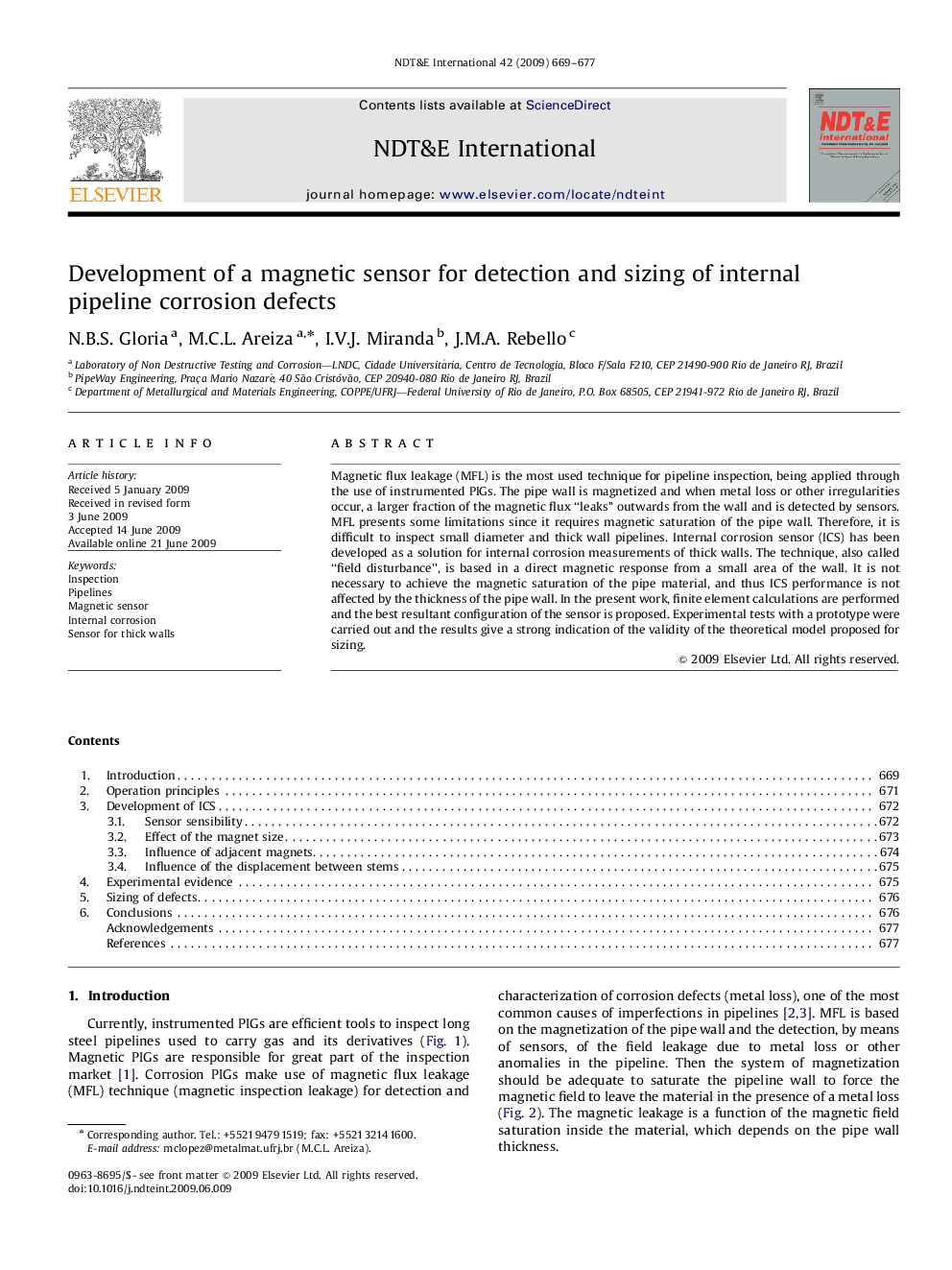| Article ID | Journal | Published Year | Pages | File Type |
|---|---|---|---|---|
| 295442 | NDT & E International | 2009 | 9 Pages |
Magnetic flux leakage (MFL) is the most used technique for pipeline inspection, being applied through the use of instrumented PIGs. The pipe wall is magnetized and when metal loss or other irregularities occur, a larger fraction of the magnetic flux “leaks” outwards from the wall and is detected by sensors. MFL presents some limitations since it requires magnetic saturation of the pipe wall. Therefore, it is difficult to inspect small diameter and thick wall pipelines. Internal corrosion sensor (ICS) has been developed as a solution for internal corrosion measurements of thick walls. The technique, also called “field disturbance”, is based in a direct magnetic response from a small area of the wall. It is not necessary to achieve the magnetic saturation of the pipe material, and thus ICS performance is not affected by the thickness of the pipe wall. In the present work, finite element calculations are performed and the best resultant configuration of the sensor is proposed. Experimental tests with a prototype were carried out and the results give a strong indication of the validity of the theoretical model proposed for sizing.
